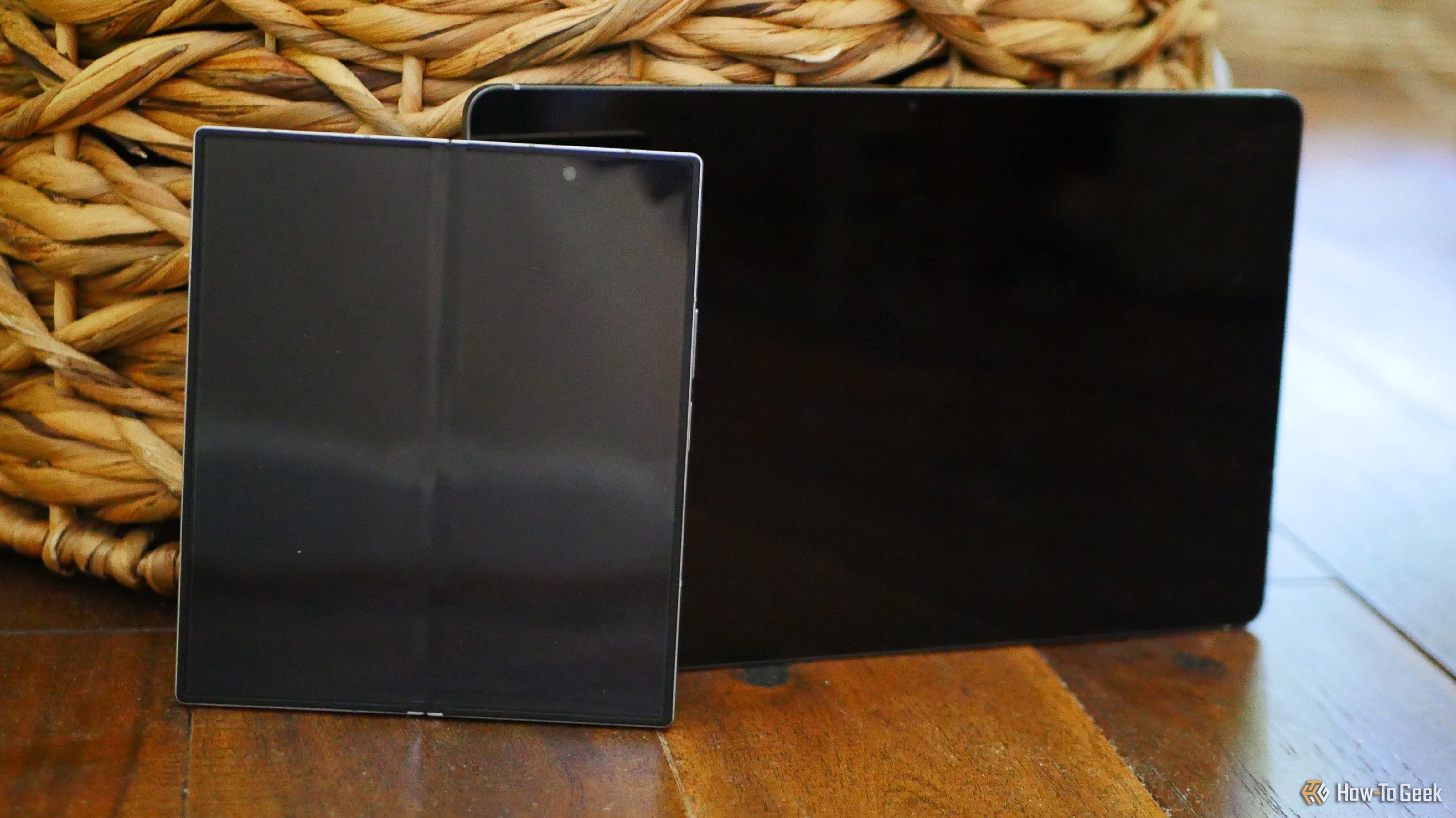Why Foldable Phones Beat Android Tablets for Me

A Unique Design That Offers Practical Benefits
The concept of a foldable phone that transforms into a tablet-like device is intriguing, but after over a year of using a foldable, I've discovered that the aspect ratio of my folding phone is actually more convenient than any Android tablet I've owned. This preference stems from both practicality and comfort in daily use.
A Shape That's Easy to Hold One-Handed
Designing a foldable phone presents unique challenges. It’s not just about one display, but two, and every design decision affects both. The Galaxy Z Fold series, which pioneered the book-style foldable, features a narrow and tall cover display. When opened, it creates a device that is taller than it is wide, making it easy to hold in one hand.
Other foldables, like the OnePlus Open or the original Pixel Fold, have different shapes. While they may resemble conventional phones on the outside, they tend to be too wide when open, making them less comfortable to hold. These devices are still narrower than most Android tablets, which typically have a widescreen aspect ratio for media consumption. However, this design makes them awkward for tasks beyond watching videos or playing games.
An Aspect Ratio That Enhances Productivity
I’ve found that the aspect ratio of my Galaxy Z Fold 6 is ideal for productivity. I work on this device daily, starting my mornings by sitting back in a cozy chair, holding the unfolded phone in one hand and using a stylus in the other. This setup allows me to type quickly and comfortably, with less strain on my hands and wrists compared to traditional keyboards.
This workflow is something I don’t find as effective on Android tablets. I once used a Boox Tab Ultra C as my primary PC for several months. While I enjoyed gesture writing with a stylus, I had to place the tablet on a surface, similar to a laptop. With my foldable, I can work anywhere without needing a table or desk.
The aspect ratio of my foldable is also better suited for tasks like web browsing and word processing. A screen shaped more like a piece of paper is more practical than one that resembles a miniature widescreen monitor. Rotating most Android tablets into portrait mode only makes things worse, as the layout becomes cramped and difficult to navigate.
A Device That Enhances Leisure Activities
Beyond work, the shape and size of my foldable have influenced how I spend my free time. I now read far more e-books, as the device’s form factor closely matches that of a dedicated eReader. I’ve also discovered a new appreciation for digital comics, which fit perfectly on my screen. Magazines, too, are easier to enjoy on this device.
Even web browsing feels more natural on my foldable. Although we have several tablets in our home, I prefer using my phone for browsing. Webpages are generally taller rather than wider, and the Galaxy Tab S10 FE often feels too large and unwieldy. Holding it upright results in a view that starts to feel cramped, like a regular smartphone.
A Foldable That Feels Larger Than It Is
The shape of a device also affects how users perceive its size. My Nintendo Switch 2 has a slightly larger 7.9-inch screen than the internal 7.6-inch display of my phone, yet it feels much bigger when playing games or watching trailers. However, when simply browsing the eShop, I find that my phone offers a more immersive experience. Sometimes, I even reach for my Z Fold 6 instead of the Switch 2, despite its smaller size.
I’m curious about the tri-fold phone Samsung is expected to launch next year. While a larger 10-inch display might seem beneficial, I’m not sure if it would improve my productivity or reading experience. If the device requires placing it on a table to use comfortably, it could become limiting. A larger screen might look impressive, but in practice, it may not offer significant advantages.
Final Thoughts
While I appreciate the idea of Android tablets, I rarely use them as much as I expect. The Galaxy Z Fold has shown me that size and shape play a crucial role in how useful a device is. Most Android tablets are too large to handle easily and often feel awkward in different orientations.
Instead of wishing for a foldable that opens into a tablet shape, I’d prefer a tablet that mimics the form of my foldable. It may not be perfect for video or gaming, but it would be more versatile for everyday tasks. In short, the ideal shape for a book-style foldable might already be here.